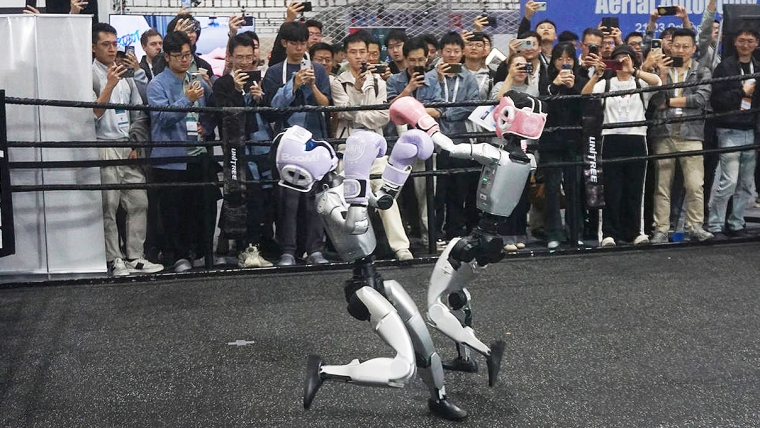
A decade ago, China’s government unveiled Made in China 2025 – a bold vision for transforming the country from the world’s assembly line into a global innovation leader. The plan was met with considerable skepticism, particularly in the West, where a robust scholarly consensus held that authoritarianism was fundamentally incompatible with innovation. Furthermore, with a shaky technological base, middling universities, and a shortage of high-skilled talent, China was light-years behind the global frontier. Barring drastic political change, many observers concluded, China would remain a “copycat nation.”
We know how that prediction turned out. But the misguided belief that innovation depends on political freedom appeared to have a sound analytical and historical basis. As the late political scientist Samuel Huntington observed in 1996, the tools that keep authoritarian regimes in power – such as censorship, repression, and corruption – naturally stifle innovation and economic dynamism. And the conditions that enable innovation, such as greater human mobility and information flows, risk empowering forces that could threaten an authoritarian regime. Mikhail Gorbachev could have attested to that.
But as I show in my book Autocracy 2.0, China’s leaders found a way around this “king’s dilemma.” Crafting a model I call “smart authoritarianism,” China has blended a novel approach to political control with selective economic openness, building on lessons from high-tech, authoritarian Singapore.
Eschewing heavy-handed repression, the Communist Party of China (CPC) pioneered diverse and subtle techniques of information control, which scholar Tony Zirui Yang argues “normalized” censorship and “desensitized” the Chinese people to it. Instead of truncheons and guns, China’s leaders use digital tools like AI, facial recognition, and other biometric-data collection to detect, monitor, and preempt dissent. While violent coercion still occurs, the scholar Lynette Ong explains, the CPC maintains deniability by outsourcing it to “thugs for hire” – enforcers who intimidate petitioners, disperse protests, and carry out forced evictions.
Meanwhile, China’s government has pursued a selective opening of certain areas of the economy, including universities and the private sector, and invested heavily in expanding the country’s innovative capacity, such as by funding research and development and promoting human-capital formation. Over the last decade, China has drastically improved the quality of its higher education and built a massive high-tech workforce.
China resembles other rising economies, including the 19th-century United States. China’s bright young people used to study overseas but increasingly could stay home to get a superb education. China produces the most science and engineering doctoral graduates worldwide. The majority of engineers at DeepSeek, which stunned the world in 2023 with its open-source AI model, were trained in China.
Chinese firms now lead – and even dominate – several high-tech sectors. China possesses more than 80% of the world’s solar manufacturing capability. Chinese firms lead the electric-vehicle and EV-battery industries, and in 2023, China surpassed Japan to become the world’s largest automobile exporter. A single Chinese company, DJI, is the undisputed leader in the commercial drone industry, claiming more than 70% of the global market.
China remains a one-party state that disappears dissidents and censors ideas, yet it has vaulted past Japan, Germany, and France – countries long celebrated as global innovation leaders – to become the world’s tenth most-innovative economy in the latest Global Innovation Index. China ranks among (or above) the world’s top innovators, including South Korea, on metrics like number of patents, production of widely cited science and technology research, and high-value manufacturing. Made in China 2025 may not have hit all its targets, but China has certainly reached the technological frontier.
Some observers still have their doubts. They believe that intensifying repression under President Xi Jinping will erode China’s innovative capacity, pointing to his crackdown on the tech sector, which began in 2020 and destroyed a huge amount of national wealth. But smart authoritarianism is not about maximizing growth; it is about balancing economic objectives with the imperative of regime survival. For example, China’s government has eased up considerably on the tech sector since 2023. The smart authoritarian model accounts for periods of political tightening and loosening.
Skeptics note that China also faces other powerful growth headwinds, such as adverse demographics, uneven and slowing productivity, massive debts, and a troubled real-estate sector. These challenges are real and have already contributed to a significant growth slowdown. But by transforming itself into a technology superpower and shifting the global balance of power, China has already achieved something few people believed would be possible.
To be clear, acknowledging that smart authoritarians can innovate does not mean that they are better equipped to do so than their democratic counterparts. Democratic countries still boast universities that attract the world’s brightest minds, firms that work at – and push forward – the technological frontier, and transnational networks that foster and facilitate innovation. In 2020, democracies were the first to develop the vaccines that offered the world a way out of the COVID-19 pandemic. They are more than capable of competing with China.
But Western democracies can no longer dismiss China’s innovative potential – or the dangers it implies. As a superpower, China poses an increasingly potent military threat to Taiwan, and to America’s future strategic influence in East Asia. Not only does a successful China provide an appealing model for other smart authoritarians, such as in Saudi Arabia and the United Arab Emirates; its government also directly supports dictators by sharing new technologies and strategies of repression.
Xi recently declared, “No force can stop China’s scientific and technological development!” Whether this is true remains to be seen, but one thing is certain: Western democracies cannot simply assume that they will come out on top.
Jennifer Lind is Associate Professor of Government at Dartmouth College, Associate Fellow at Chatham House, and the author of Autocracy 2.0: How China’s Rise Reinvented Tyranny (Cornell University Press, 2025). Copyright: Project Syndicate, 2025, published here with permission.

We welcome your comments below. If you are not already registered, please register to comment.
Remember we welcome robust, respectful and insightful debate. We don't welcome abusive or defamatory comments and will de-register those repeatedly making such comments. Our current comment policy is here.